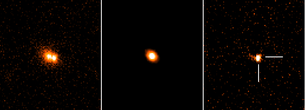ESA Space Science | Gaia | 2014 July 29
Following extensive in-orbit commissioning and several unexpected challenges, ESA’s billion-star surveyor, Gaia, is now ready to begin its science mission.Inside Gaia’s billion-pixel camera - Credit: ESAClick to play embedded YouTube video.
The satellite was launched on 19 December 2013, and is orbiting a virtual location in space 1.5 million kilometres from Earth.
Gaia’s goal is to create the most accurate map yet of the Milky Way. It will make extremely accurate measurements of the positions and motions of about 1% of the total population of roughly 100 billion stars in our home Galaxy to help answer questions about its origin and evolution.
Repeatedly scanning the sky, Gaia will observe each of its billion stars an average of 70 times each over five years. Small apparent motions in the positions of the stars will allow astronomers to determine their distances and movements through the Milky Way.
In addition, Gaia will also measure key physical properties of each star, including its brightness, temperature and chemical composition. ...
http://asterisk.apod.com/viewtopic.php?t=29043
http://asterisk.apod.com/viewtopic.php?t=29562
http://asterisk.apod.com/viewtopic.php?t=32274
http://asterisk.apod.com/viewtopic.php?t=32621
http://asterisk.apod.com/viewtopic.php?t=32876
